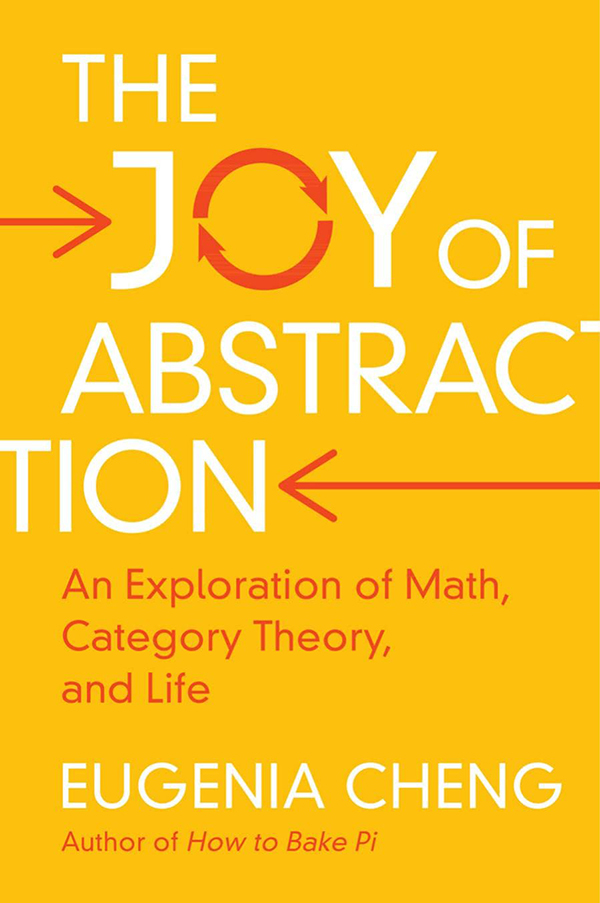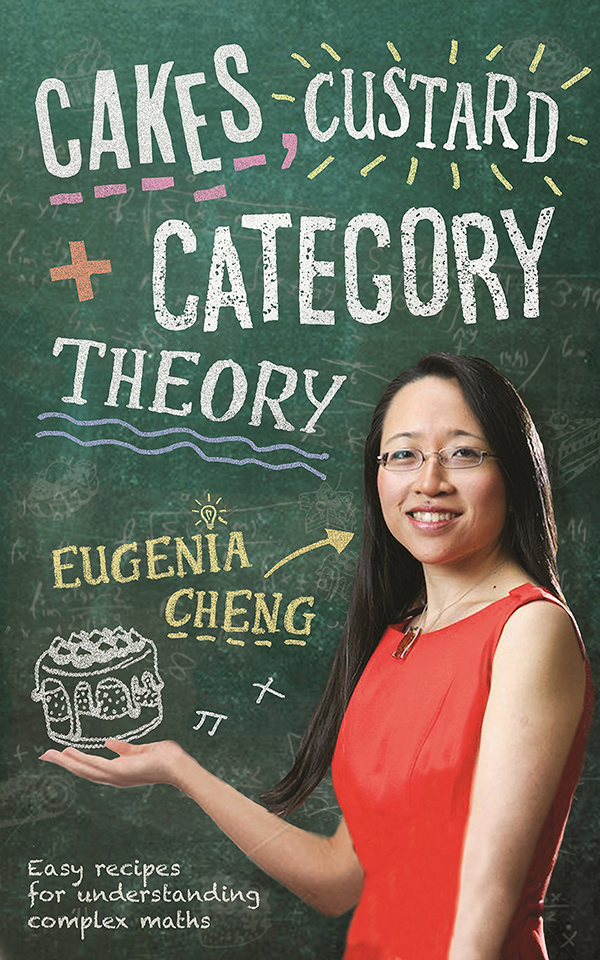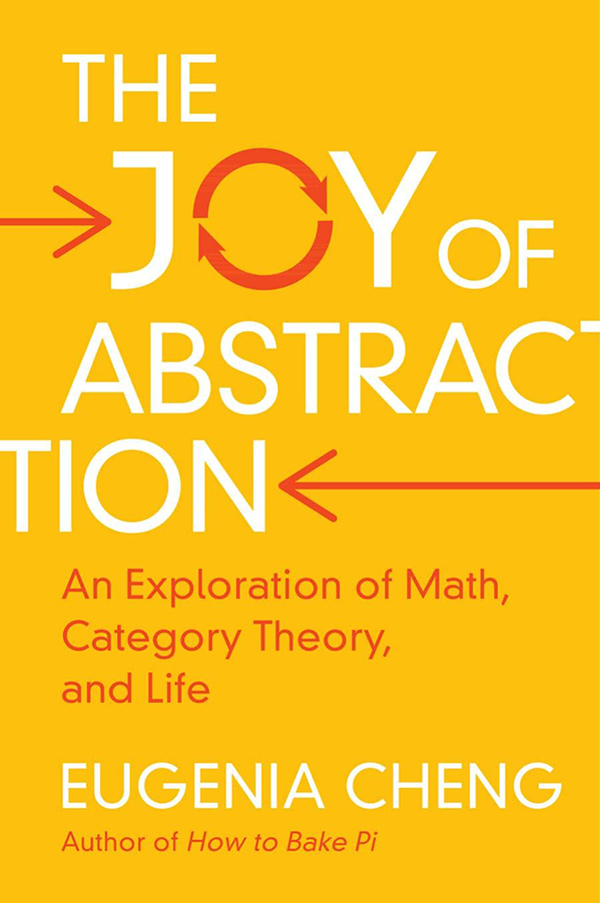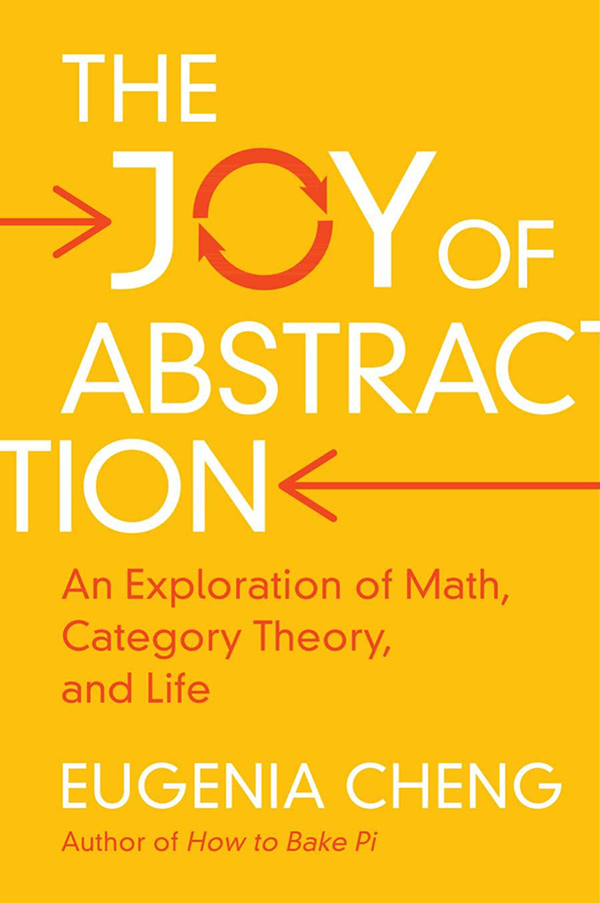
Bringing the lofty ideas of pure math down to earth
The mathematician and concert pianist Eugenia Cheng is the closest I’ve come to finding such a voice.
I got into Cheng’s books because I share her love of baking. For the proud owner of a stand mixer and several pastry brushes, the title Cakes, Custard and Category Theory sounded too delectable to pass up. Its first chapter, about the epistemic nature of mathematics, starts with a recipe for brownies. Cheng tells you that stumbling into new ideas in math is like screwing up a soufflé recipe so badly that you end up with cookies. I was easily drawn in.

Many popular books on mathematics try to be approachable by talking about stock markets or poker odds.Others wax poetic about prime numbers and the mystery of infinity. Cheng’s books lift readers to the rarefied heights of mathematical abstraction by teaching them category theory, which she believes is the most foundational kind of math.
Category theory may seem esoteric, but it is the underlying grammar of mathematical logic. Cheng’s books pull back the curtain to show how pedestrian mathematics research can be; the act of chaining simple inviolable axioms into complex arguments is simply the ivory-tower equivalent of building a Lego spaceship from tiny, indestructible pieces. More important, they are an invitation to change your worldview, to simplify thinking with abstractions, to interpret and analyze the world in mathematical terms.
Reading Cakes, Custard and Category Theory (also issued as How to Bake Pi), one soon discovers that the desserts are mere gambits. Each chapter begins with a recipe followed by an analogy between math and baking. Puff pastry is a reminder that extreme precision is a part of mathematical research; elsewhere, we learn that there is really no right way to make a cake and that we should embrace flexibility in ingredients as well as techniques. These analogies can feel tenuous, sometimes even forced. But thankfully, they quickly fade away to make room for a casual conversation about mathematical topics.
Cheng thinks the steely vocabulary of logic can help people caught in a heated argument realize that the divide between them isn’t so irreconcilable.
Cheng’s latest book, The Joy of Abstraction, builds on similar themes but feels more like an undergraduate textbook. Its chapters, with titles like “Isomorphism” and “Functors,” provide a fairly rigorous introduction to category theory and are replete with theorems, proofs, and exercises. Occasionally, Cheng goes on a tangent about how certain concepts have etymological and semantic parallels to real life—a “function” can be thought of as a vending machine, a “set” may represent a group of people (and you can divide that set into “partitions” of “friendships”). But having set up the stage using familiar objects, she quickly gets to the hard work of manipulating them using logic. In short, her books are a humane introduction to foundational math, and they paint a good picture of what mathematicians spend their time thinking about.

There is, however, one major way her math books markedly differ from undergraduate textbooks. A persistent theme running across Cheng’s writing is that the world is best understood in a stripped-down form, and that insights from abstract math can even nourish empathy and a sense of justice. Friends trying to be sympathetic to a heartbreak by prying into painful details should content themselves with simply knowing that a) there was something you loved and b) you recently lost it. It’s as simple as that; all other details are superfluous.
Cheng’s more unorthodox contention—one best presented in her book The Art of Logic in an Illogical World—is that category theory can, in fact, be deployed in our daily lives to make discussions around privilege, sexual harassment, racism, and even “fake news” less divisive. For instance, she thinks that the debate about social welfare can be described in terms of “false positives” and “false negatives”: “a false negative in this case is someone who deserves help but doesn’t get it; a false positive would be someone who doesn’t deserve help but does get it.” The debate, her argument goes, isn’t about whether we should help people (of course we should!) but rather about the extent to which we accommodate such false positives and false negatives. Someone who wants to reduce the amount of money spent on social welfare is probably bothered by the idea that false positives are abusing the system by collecting benefits they don’t deserve. Cheng thinks the steely vocabulary of logic can help people caught in a heated argument realize that the divide between them isn’t so irreconcilable (after all, they both want to help people) and steer them toward a more nuanced conversation of “to what extent” and “under what circumstances.”

